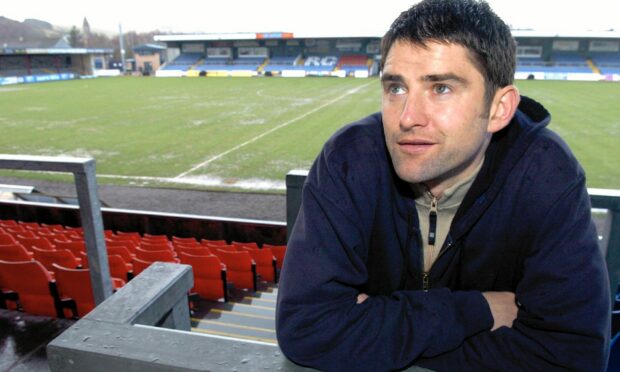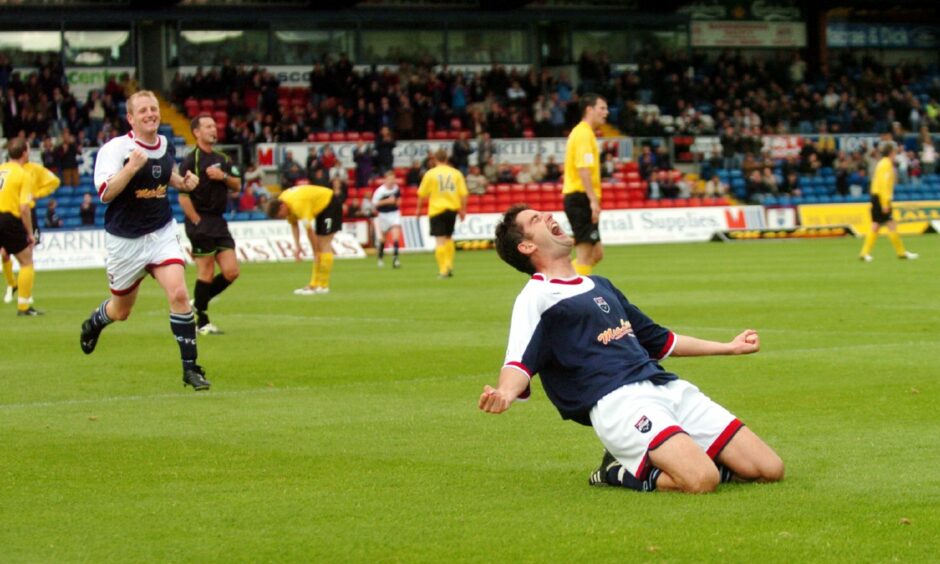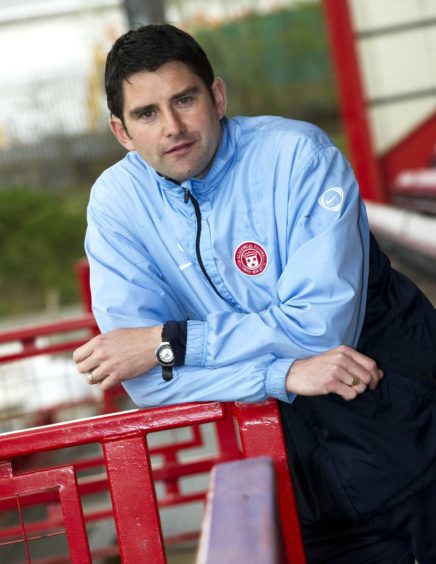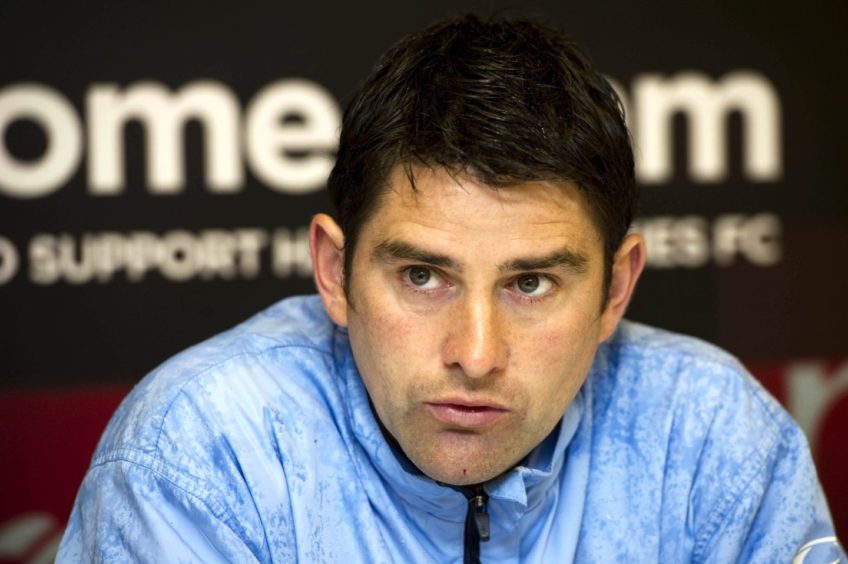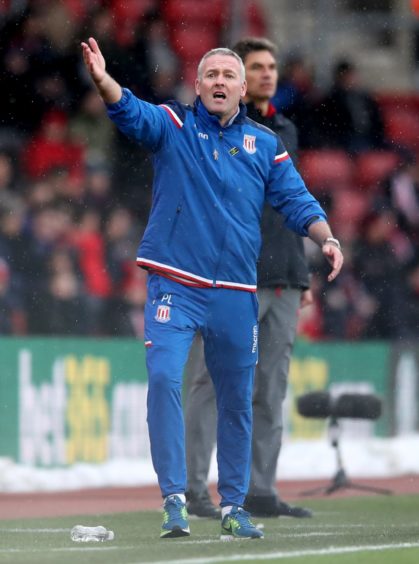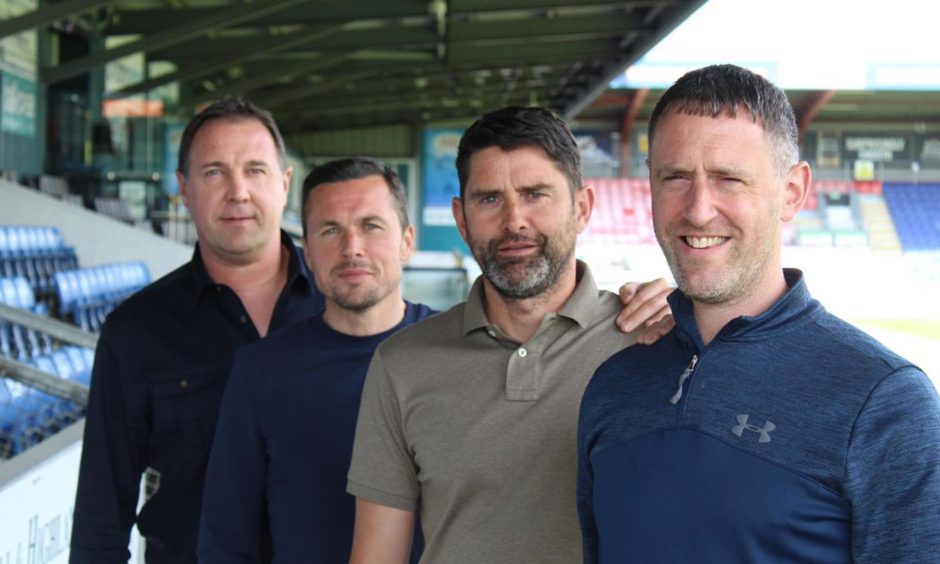Stuart Taylor will be a familiar face to many Ross County fans, but the new first team coach has returned with a wealth of experience since his playing spell in Dingwall nearly 16 years ago.
Midfielder Taylor was brought to Dingwall from St Johnstone by Alex Smith in 2004, but injuries reduced his playing time to 16 appearances in 18 months.
His most memorable moment in a Staggies shirt came at the start of the 2005-06 season, when he netted the winner – his only strike in County colours – in a 2-1 First Division victory at home to Stranraer.
He was allowed to join Airdrie United a few months later, however he has now returned as part of new manager Malky Mackay’s freshly-assembled backroom team. He will support his former Staggies team-mate Don Cowie who has become assistant manager, with Enda Barron also joining to oversee data analysis and player recruitment.
The move will see Taylor return to Scotland 11 years after leaving his first coaching role with Hamilton Accies. Taylor became part of Accies’ staff in 2007, initially combining it with playing until he retired two years later, but he left the Lanarkshire club in 2010 in what was reported to be a cost-cutting measure.
The career path he has undertaken since then makes for impressive reading. In August 2012 he relocated to Qatar to join Al-Khor Sports Club, where he had a six-month stint assisting Romanian manager Laszlo Boloni.
In an interview with extratime.ie in 2017, Taylor said: “I thought it was an opportunity to try a different lifestyle and culture. I had offers to stay in Scotland, but that interested me more. I did it, but then realised that I wanted something more challenging for me as a coach.”
The short spell in the middle-east proved to be the driving force for Taylor’s own move into management, as he returned to Ireland where he had previously played to join Limerick in January 2013.
He inherited a team which had been freshly promoted to the Irish Premier Division for the first time in 20 years, but had still taken the decision to sack previous manager Pat Scully ahead of the new campaign. It was to prove a successful transition however, with Taylor leading the Super Blues to a seventh-placed finish, however his reign ended after only 18 months in the job as he took the decision to resign.
Taylor said: “I never actually signed a contract and handed in my resignation because there were things I wasn’t happy with. I had a great background staff, who knew what was happening.
“It will stand to me in good stead, but it was the right time to resign, even though my family were distraught to be leaving Limerick.”
That remains Taylor’s only experience of being a manager in his own right at senior level, as he returned to the UK in summer 2014 to become Aston Villa’s under-23 manager.
It was during this spell his career first began to move in tandem with Paul Lambert, who was Villa boss at the time. Taylor had cleaned Lambert’s boots as a youth player at St Mirren in the early 1990s, when he revealed his interest in coaching was first sparked working under manager Jimmy Bone.
Taylor would go on to become a first team coach at Wolves under Lambert in November 2016, where he credited the former Scotland captain’s influence on his own coaching career.
In an interview with the Wolves website, Taylor said: “I know what Paul is like, in terms of how in-depth he is, and the knowledge and the enthusiasm that he carries.
“The way that he goes about his work is great for me to learn from.
“I enjoyed my spell with him at Aston Villa when I was working with the under-23s squad. Paul made sure there was a link right throughout the club which he will do here as well. He always makes sure he gets to watch so many games – under-23s, under-18s, home and away – and to be able to link up with him again is really important for me.”
The pair left Molineux in the summer of 2017, with Taylor going on to have a very brief stint as reserve team manager at Rangers when Graeme Murty stepped up to become interim boss. The spell at Ibrox lasted only a matter of days however, with Taylor hastily drafted in as Lambert’s number two when he took up the Stoke City job in January 2018.
After suffering relegation to the Championship at the end of the season that reign came to an end within four months however.
Later that year they once again linked up with Ipswich Town. The Tractor Boys, as UEFA Cup winners in 1981, provided another big club setting for Lambert and Taylor, however they were unable to prevent the club being relegated from the Championship in their first season in charge.
Following two unsuccessful tilts at promotion from League One their spell would last two-and-a-half years before ending in February this year.
That was his most recent post prior to rejoining County but it was clear that Taylor made the most of his spells with Lambert. He was able to tap into Lambert’s experience as a Champions League winner with German club Borussia Dortmund and also citing his own passion for Spanish football as a major influence on his own style.
In an interview with the East Anglian Daily Times shortly after joining Ipswich in 2018, Taylor said: “I did my pro licence and then went to a couple of Spanish clubs and did a case study on one club in particular over there.
“I like the way they go about things over there and the way they work, as well as the footballing philosophy they have.
“Since working with the gaffer, who has worked from the German model, there’s a good mix. It’s good to learn that as well as the Spanish way, which hopefully works out well.
“In football it’s important to bring a broad range of experience and knowledge where you can take the best out of everything and then give that to the squad you have at the time.”
Taylor has now decided to go it alone without Lambert, ending a working association which has carried them through much of the last seven years.
Mackay and Lambert played together at Celtic during the late 1990s, and the new Staggies boss is sure to have made the former Celtic and Scotland captain a key sounding board for his latest backroom recruit.
In returning to Dingwall the clearly ambitious 46-year-old Taylor will now be looking to impart some of the experience he has gained from the highest level of English football, on to a Dingwall outfit who – like himself – have come a long way since they parted company in 2006.
